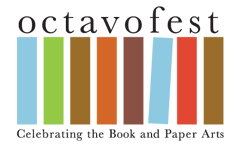Exploration of “Alice in Wonderland” Book Illustrations
Location
Kelvin Smith Library, Case Western Reserve University, Dampeer Room, 2nd Floor, 11055 Euclid Avenue, Cleveland, 44106-7151
Event Website
http://library.case.edu/ksl/aboutus/events
Start Date
10-3-2015 2:00 PM
End Date
10-3-2015 4:00 PM
Cost to Attend
Free
Pre-registration required?
Yes
Contact Information (for registration)
Please call 216-368-2992 to register for this free event.
Event Type
Reception, Lecture
Description
During the 150 years since the first publication of Alice’s Adventures in Wonderland, there have been numerous explications of the text of the two Alice books and explorations into the challenges translating Carroll’s unique use of language and nonsense words into languages other than English. What sets the Alice books apart is that as they became the most known, respected, republished, analyzed, parodied, abridged, appropriated, and adapted works of literature in the world, illustrators were drawn to the complexities of the text. It is without question that no other book (save perhaps the Bible) have been the inspiration for illustrators. The visual representation of Alice is more than a case study; it is the reigning example, of text visualization. Yet despite the fact that that there have been hundreds of illustrated editions of one or both books by illustrators since John Tenniel, and perhaps because so many people consider his pictures to be the ne plus ultra of Alice illustration, until recently there have been relatively few scholarly or critical discussions about the illustrations contained in full editions of the Alice books, or of the many separate works inspired by Alice and created by fine artists (such as Rene Magritte, Oscar Kokoschka, Kiki Smith, and Balthus) and filmmakers.
There is a great deal to be learned from how a visual artist translates words into visual images, including as it documents changes in society’s taste in culture and couture. Changes in illustration technique and style over a century and a half reflect changes in artistic movements. The Alice books had a profound effect on the history of book illustration in general. This lecture will explores some of the key elements that affected the development of Alice illustrations related to: (1) the textual influences (including intended audience, interpretative styles, language, and culture); (2) the temporal and spatial relationships (such as the portrayal of the external environment, the choice of characters to illustrate, and the fashion of the period); and (3) the artistic elements (including artistic genres, choice of media, and methods and techniques. The lecture will then examine numerous examples of how different illustrators approached just one scene from the book.
Exhibit
Alice Project: Last year, students of the Cleveland Institute of Art’s Illustration Department were inspired by a local book collector's exceptional collection of illustrated Lewis Carroll books. The resulting project was a book, Alice, which contains new illustrations to Lewis Carroll’s works by the students. The book and prints of the students’ work are displayed in the Kelvin Smith Library art gallery, and additional student works can be found on display throughout the library.
A reception will follow.
Event Location
Exploration of “Alice in Wonderland” Book Illustrations
Kelvin Smith Library, Case Western Reserve University, Dampeer Room, 2nd Floor, 11055 Euclid Avenue, Cleveland, 44106-7151
During the 150 years since the first publication of Alice’s Adventures in Wonderland, there have been numerous explications of the text of the two Alice books and explorations into the challenges translating Carroll’s unique use of language and nonsense words into languages other than English. What sets the Alice books apart is that as they became the most known, respected, republished, analyzed, parodied, abridged, appropriated, and adapted works of literature in the world, illustrators were drawn to the complexities of the text. It is without question that no other book (save perhaps the Bible) have been the inspiration for illustrators. The visual representation of Alice is more than a case study; it is the reigning example, of text visualization. Yet despite the fact that that there have been hundreds of illustrated editions of one or both books by illustrators since John Tenniel, and perhaps because so many people consider his pictures to be the ne plus ultra of Alice illustration, until recently there have been relatively few scholarly or critical discussions about the illustrations contained in full editions of the Alice books, or of the many separate works inspired by Alice and created by fine artists (such as Rene Magritte, Oscar Kokoschka, Kiki Smith, and Balthus) and filmmakers.
There is a great deal to be learned from how a visual artist translates words into visual images, including as it documents changes in society’s taste in culture and couture. Changes in illustration technique and style over a century and a half reflect changes in artistic movements. The Alice books had a profound effect on the history of book illustration in general. This lecture will explores some of the key elements that affected the development of Alice illustrations related to: (1) the textual influences (including intended audience, interpretative styles, language, and culture); (2) the temporal and spatial relationships (such as the portrayal of the external environment, the choice of characters to illustrate, and the fashion of the period); and (3) the artistic elements (including artistic genres, choice of media, and methods and techniques. The lecture will then examine numerous examples of how different illustrators approached just one scene from the book.
Exhibit
Alice Project: Last year, students of the Cleveland Institute of Art’s Illustration Department were inspired by a local book collector's exceptional collection of illustrated Lewis Carroll books. The resulting project was a book, Alice, which contains new illustrations to Lewis Carroll’s works by the students. The book and prints of the students’ work are displayed in the Kelvin Smith Library art gallery, and additional student works can be found on display throughout the library.
A reception will follow.
https://engagedscholarship.csuohio.edu/octavofest/2015/all/60
